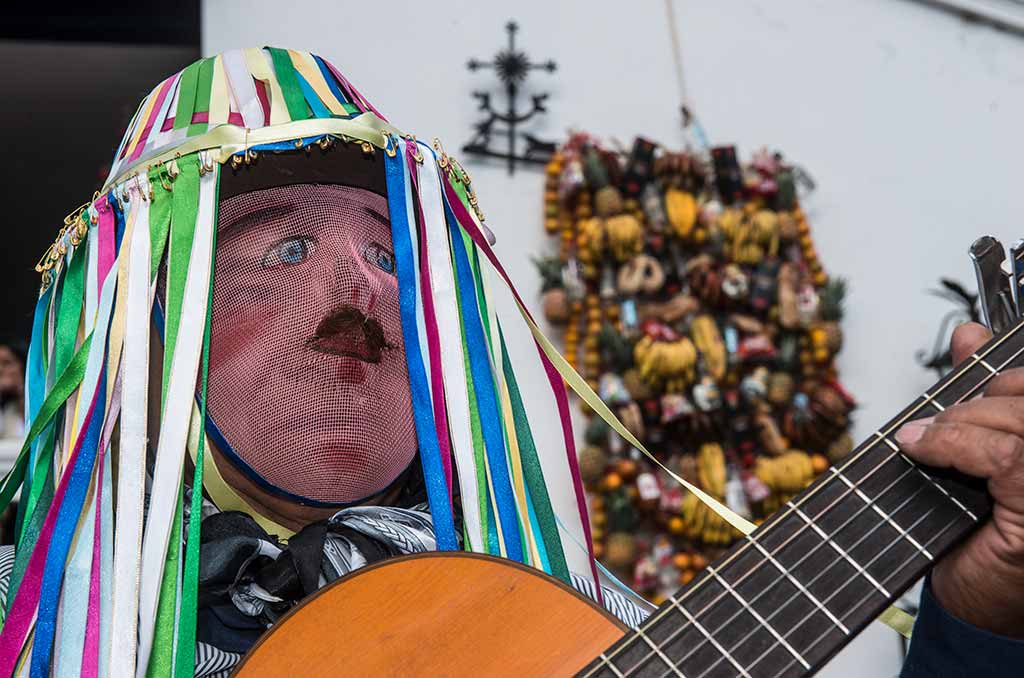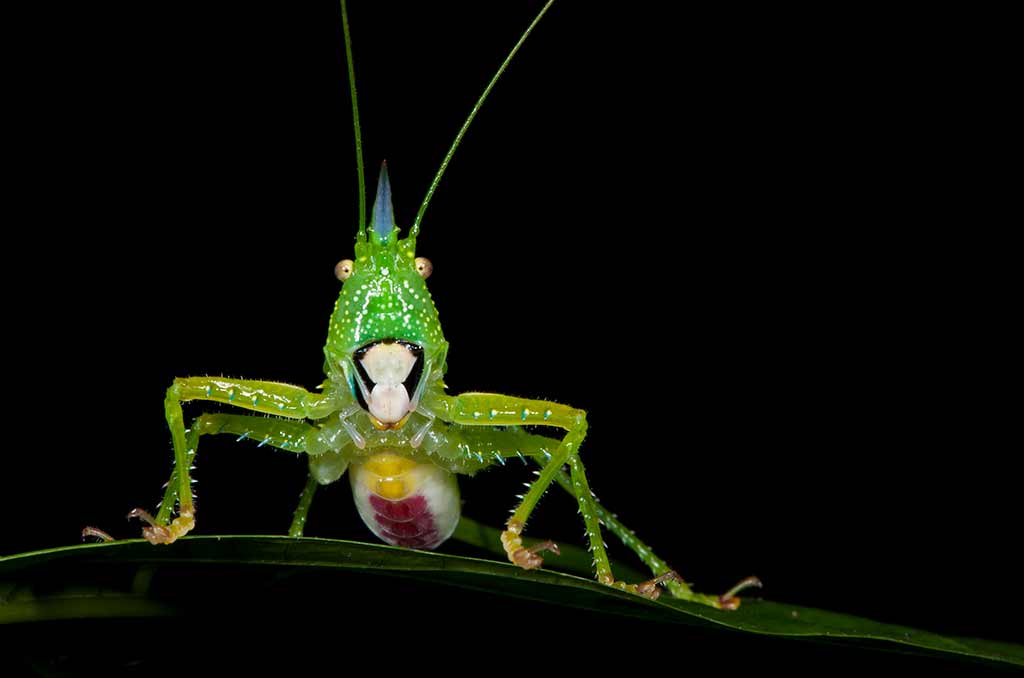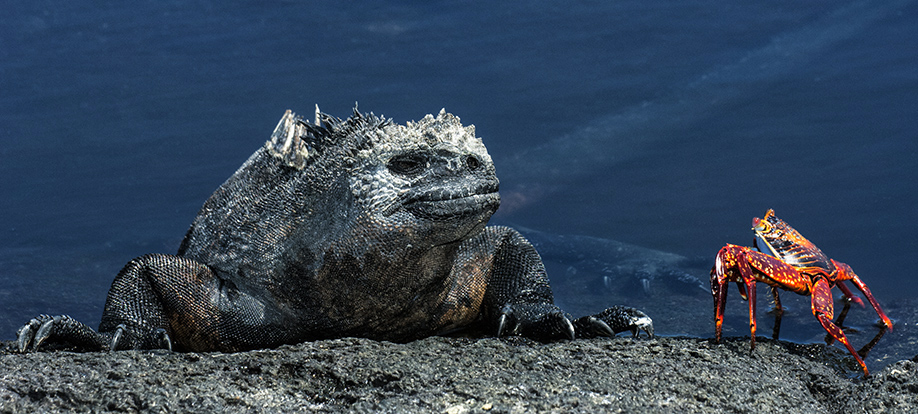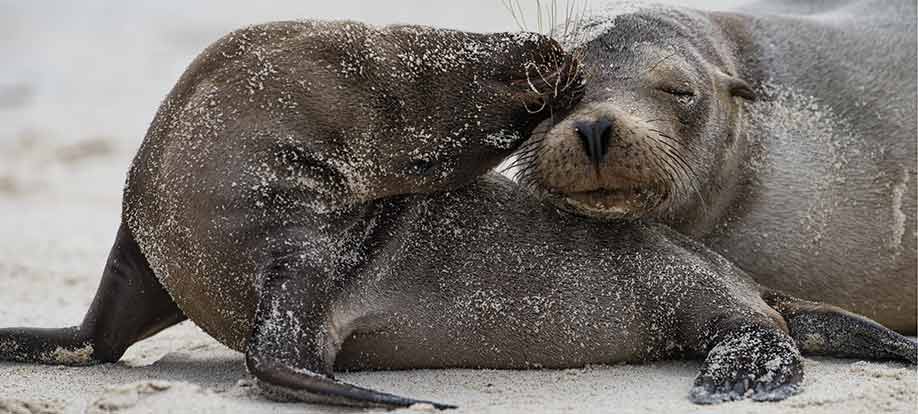- Duration Variable
- Difficulty 2/5
- Group Size Minimum of 6
Ecuador
All year round
Pete Oxford Expeditions offers customizable mainland Ecuador trips to groups of six or more travelers, led by Pete or Reneé or both. Ecuador is a small yet megadiverse country, the size of Colorado in the USA. We have 20,000 species of vascular plants, more than 1,600 species of birds, more than 840 species of reptiles and amphibians, and 341 identified species of mammals! The four principle regions are the Pacific coastal region, the high Andes and cloud forest, lowland Amazon rainforest and the Galapagos Islands. Each area offers a totally different suite of fauna, flora and indigenous people. When notified at least three months in advance, we can design trips to include any of the three mainland regions, alone or in combination. Also, if required we can ‘wrap’ an itinerary around an important cultural event, such as the Good Friday procession in Quito, the Inti Raymi festivals in June, or the Day of the Dead in November. Join us in the Amazon, the cloud forest, the high Andean páramo with active volcanoes or for some seasonal Andean bear or humpback whale watching!
The map is a visual representation of the locations included in this trip. Click over the image to zoom into the map. For more information, please refer to the itinerary for this expedition.
Trip Details
General Information
PRICE: Determined by itinerary
Single Supplement: Determined by itinerary
Arrival: Mariscal Sucre International Airport, Quito, Ecuador
Departure: Quito or Guayaquil
Arrival Time: All year round
INCLUDED
- Accommodation on a shared or single room basis.
- All meals, unless otherwise stated.
- Airport transfers on arrival and departure.
- Assistance on arrival and departure at each destination.
- Additional specialist guides where needed.
- All internal airfares and ground transportation on the itinerary.
- One or two Pete Oxford Expeditions trip leaders, depending on group size.
- All gratuities.
NOT INCLUDED
- Round-trip international airfare to Ecuador.
- Travel insurance – highly recommended and can be booked via this website.
- Early check-in or late check-out at hotels.
- Personal expenses, such as laundry, telephone, internet and alcoholic beverages.
VIEW ITINERARY
EXAMPLE OF AN ITINERARY FOR THE GOOD FRIDAY PROCESSION
A Day 1: Quito
Arrive at Quito’s Mariscal Sucre International Airport and transfer to local hotel for overnight. Dinner in a nearby restaurant.
B Day 2: Hacienda Zuleta, Cayambe
After breakfast at the hotel, we leave the city and embark on a beautiful scenic drive to the north, stopping en route for photos and, on a clear day, to admire Cayambe, Ecuador’s third highest snow-capped volcano. We arrive at Hacienda Zuleta, in Imbabura Province, for lunch. The home is a stunning colonial hacienda, once the residence of former Ecuadorian president Galo Plaza Lasso. We will visit a condor rehabilitation center where wild condors also often come to visit. On the grounds of the hacienda we search for giant hummingbirds and sample the variety of traditional cheeses made on site before a delicious meal of Ecuadorian cuisine, a hot bath and bed.
C Day 3: Hacienda Piman
Beginning our day with a morning hike, we look specifically for the rare Andean, or spectacled, bears that are often seen in the area. With 21 spectacled bears known to inhabit the hacienda, our chances are relatively high. Our morning is full of a mix of wildlife viewing and cultural exchange before a welcome meal at the hacienda. After lunch we make our way further north to a different colonial hacienda that we call home for a further two nights. Hacienda Piman is tucked into an oasis-like valley between the folds of dry mountains and the Afro-Ecuadorian valley of El Chota. In a bizarre cultural Andean twist, these descendants of the former slave community still retain many of their African traditions. After arrival at the hacienda, we will visit a traditional family in the area.
D Day 4: El Angel Reserve, Hacienda Piman
After an early breakfast, we leave the hotel armed with a box lunch for a full day roaming areas of northern Ecuador away from the main tourist circuit. We will see a host of wildlife, spectacular scenery and local communities, but our two main goals are, first, the stunning area of El Angel Ecological Reserve where acre upon acre of giant daisies (frailejones) stand up to 20 feet tall. It is a unique scene of a slice of páramo unique to this northern part of Ecuador and neighboring Colombia. Our second highlight will be to immerse ourselves in the ethereal, elfin forest of Polylepis, the paperbark tree; no other tree species in the world grows at altitudes this high. The ecosystem is now rare due to excessive cutting for firewood. Overnight for dinner at Hacienda Piman.
E Day 5: Otavalo Market and return to Quito
After an early breakfast, we leave Hacienda Piman and drive south, continuing to explore the area and to interact with people while also taking early morning scenic photographs. We then continue to the world famous Otavalo Market. Although the poncho market has lost some of its traditional charm in recent decades as modernism encroaches, it still remains a vibrant and bustling arena, creating the perfect opportunity to mix with the Otavalan Indians (famous for their textiles and weavings), photograph, buy a few souvenirs and absorb the scene. For lunch, we head to La Compañía, a beautiful old hacienda built in the French Republican style and known for its exquisite rose farm. After lunch, we return to Quito where we check in to our hotel in the heart of the Colonial Center. Our afternoon is spent enjoying the center that is credited as being the best-preserved historical center in all of Latin America. Even for those who profess indifference to such things, Old Quito will undoubtedly impress! Dinner and overnight at Hotel Patio Andaluz.
A Day 6: Good Friday Procession, Quito
After breakfast in our hotel we spend the rest of the day immersing ourselves in Ecuador’s most important religious procession. A delight for photographers and a feast for the eyes, we will interact with the thousands of Ecuadorians who are present, including the famous cucuruchos, penitents dressed in purple habits and pointed hats. Photographic opportunities are endless during this spectacle. Towards the end of a long day, we will have time to explore the center further without the crowds and unwind. Dinner will be out at the Theatrum restaurant, in the National Theater, before our overnight in Hotel Patio Andaluz.
F Day 7: Drive from Quito to the cloud forest of San Isidro Lodge
This morning we leave early for a stunning drive over a high Andean pass (15,000 feet). We stop to photograph the diminutive and special páramo plants which include pincushion bogs, gentians and valerianas. There are also many potential bird sightings, including the tawny antpitta, chestnut-bellied seedsnipe and black-chested buzzard eagle. By careful scanning with binoculars, we could also quite reasonably spot a spectacled bear or a rare mountain tapir. From the crest of the pass, we wend our way slowly on an incredible transect of biodiversity ending as far down as the Amazon rain forest. We have an extended lunch at Guango Lodge, spending time to photograph various hummingbird species, including the incredibly adapted, rather bizarre looking sword-billed hummingbird. After lunch, we continue to San Isidro Lodge for some late afternoon birding and photography. San Isidro is a 5,000-acre private reserve in the core of the Cosanga area that repeatedly wins the annual global bird count with over 500 species registered in 24 hours! We overnight at the lodge, now approximately half way in terms of altitude, on our journey to the Amazon.
F Day 8: San Isidro
The lights of the lodge having attracted many insects during the night, a multitude of birds delights in feasting on them for breakfast, including Inca jays, masked trogons and Andean motmots, while rare wattled guans screech their morning chorus in the background. We follow a staff member to a spot where two species of normally very elusive antpittas, the white-bellied and the chestnut-crowned, are fed daily. Returning for a hearty breakfast, the rest of the morning can be spent exploring the network of forest trails, sitting at a hummingbird feeder or photographing the many spectacular birds close to the lodge that may include two species of spectacular quetzals! Overnight at San Isidro Lodge.
G Days 9 – 11: Coco and Sacha Lodge
After breakfast and a final look at the cloud forest birds, we head down to the jungle town of Francisco de Orellana, or Coca, as it is more commonly known. Here we board a motorized canoe and travel downstream on the Napo River to Sacha Lodge. A home away from home, Pete and Reneé were its first managers, designed all the trails and helped in the original construction. Sacha is an oasis to a plethora of species. It is truly lowland Amazon rain forest and, as such, we could expect anything, from monkeys, kinkajous, anacondas and anteaters to pygmy marmosets (the world’s smallest monkey), toucans and aracaris. The Sacha Lodge staff is extremely proud of their two very impressive canopy walkways and the 40-meter bird observation tower that we will enjoy. We even have the opportunity for night walks (one of our favorite activities) to photograph the incredible array of insects and frogs that we might find. With the combination of exquisite lakeside dinners, forest walks and silent passages in dug-out canoes, Sacha is a perfect Amazon experience.
H Days 12-13: Napo Wildlife Center
We leave Sacha Lodge in the morning, crossing to the south bank of the Napo River, where we enter the Yasuni National Park and Biosphere Reserve. Home to Huaorani Indians and two un-contacted tribes, Yasuni is scientifically recognized as the single most biodiverse terrestrial environment on Earth! Indeed, Pete and Reneé dedicated a whole book to the park. We will spend our time on forest walks, canoe rides and periods in the canopy observation tower. We hope to see the giant black caiman, the giant otter, the Anaconda, up to 10 species of monkeys and even possibly the Brazilian tapir and two species of peccary. There is a huge array of birds (with approximately 600 species on the list) and we should see several species of parrots on a salt lick, various macaws, parakeets, toucans, hoatzins, tanagers, oropendolas, caciques, potoos and cotingas. Lodging at Napo Wildlife Center.
I Day 14: Quito
After another morning chorus of birds and possibly howler monkeys, we head back upriver to Coca for a short flight back to Quito in the highlands. We have a late farewell lunch in Pakakuna Garden and then check in to a local hotel, Rincón del Puembo; both are close to the airport. Here the trip ends and we are on our own for dinner.



















